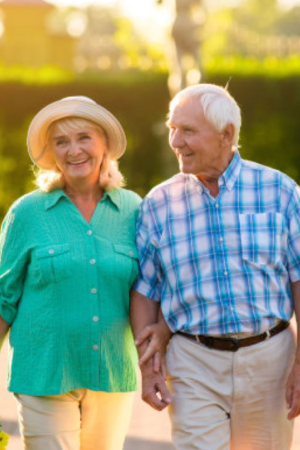
Theres one thing we know for certain about the weather: it can be unpredictable.In recent years, weve witnessed record-setting temperatures and storms from coast to coast.People sometimes find themselves thrown into emergency situations, such as tornados and flooding, with very little notice.
Thats why its important to plan for the worst.Because seniors are more likely to live with health conditions, its especially important for them to have a disaster strategy in place.In honor of National Preparedness Month, observed every year in September, we wanted to share readiness tips, from assembling a home emergency kit to organizing medical information.We hope this makes it easier to get started.Disaster Planning for Older AdultsAccording to the Centers for Disease Control and Prevention (CDC), the first step in emergency preparedness is taking time to develop a disaster plan.
Here are a few items youll want to think about:Organize health information: You know what medications you and your spouse need and which physicians each of you see and for what.Make sure family members do, too.In the event of an emergency, an adult child or close friend might need quick access to this information.
Thats why its important to document and share all current medical information with a few people closest to you.Be sure to include physician names and phone numbers, pharmacies (including mail order), and both prescription and over-the-counter medications.Some families find digital platforms make this part of disaster planning easier.
Consider exploring this list of best apps for personal medical records.Have an evacuation plan: Depending on the type of emergency, youll also want to think about how youll escape the house, where youll go, and how family can find you afterward.For example, its important to have a plan in place in the event of a fire.It should include any necessary equipment, such as a ladder that can be dropped from a window, as well as a safe place to go and call family once youre out of the house.
The same is true for tornados, ice storms, floods, and other weather events.Create a family response list: Who in the family lives closest to you? Start by identifying loved ones who could get to your home in case of an emergency or natural disaster.Create a list and make sure everyone in the family knows who will respond and in what order.Dont forget to plan for contingencies.
For example, your son might live closest, but if he is also personally impacted by the event, he may be unable to respond quickly.If so, which friend or family member would be up next? Share the list to keep everyone informed and on the same page.The CDC has a care plan form you can download and customize to help organize all of this vital information.Once youve completed it, email it to family members.Home Emergency Kit EssentialsPutting together a home emergency kit is another must for seniors.
The Federal Emergency Management Agency (FEMA) recommends you include:Nonperishable foods: A three- to five-day supply of canned foods, such as meats, beans, and fruit, is essential.Make sure to include a manual can opener.Paper towels, plates, and plastic utensils are necessities, too.Medications: Because you never know how easy it will be to access your pharmacy during an emergency, add a one- to two-week supply of all prescription and over-the-counter medications, as well as any equipment/supplies you require, to your kit.
If you have a pet that requires medications, be sure to have some of that, too.First aid kit: Its always a good idea to have at least a compact first aid kit ready for emergencies.This list from the American Red Cross can help you identify items to include.Also, make sure you have a horn or whistle you can use to signal for help in an emergency.Fresh water: Dont forget drinking water in your emergency planning.
Youll want at least one gallon of water for each person living in the house.Add more if you have any pets.Flashlights, batteries, and a radio: Keep several flashlights with extra batteries on hand, as well as a weather radio.A battery-operated cell phone charger or external power pack will make it easier to keep in touch while you are waiting to be rescued or for the storm to pass.Basement essentials: If you have a basement that serves as your storm shelter, stash blankets, pillows, folding chairs, and a cot in a corner.
Its also a good idea to store a bucket there with cleaning supplies, disinfectant, rags, and plastic gloves.Finally, in addition to the items listed above, its helpful to keep a go bag in a closet.The bag should include a few days worth of clothing and personal items.Subscribe to the Waypoints Learning CenterIf you found this article helpful, we encourage you to subscribe to our learning center.We regularly publish new articles, checklists, and guides on topics ranging from health and wellness to caregiving and senior living.
Click the Subscribe button at the bottom of this page to receive our weekly updates!
Publisher: PSL Blog ( Read More )

